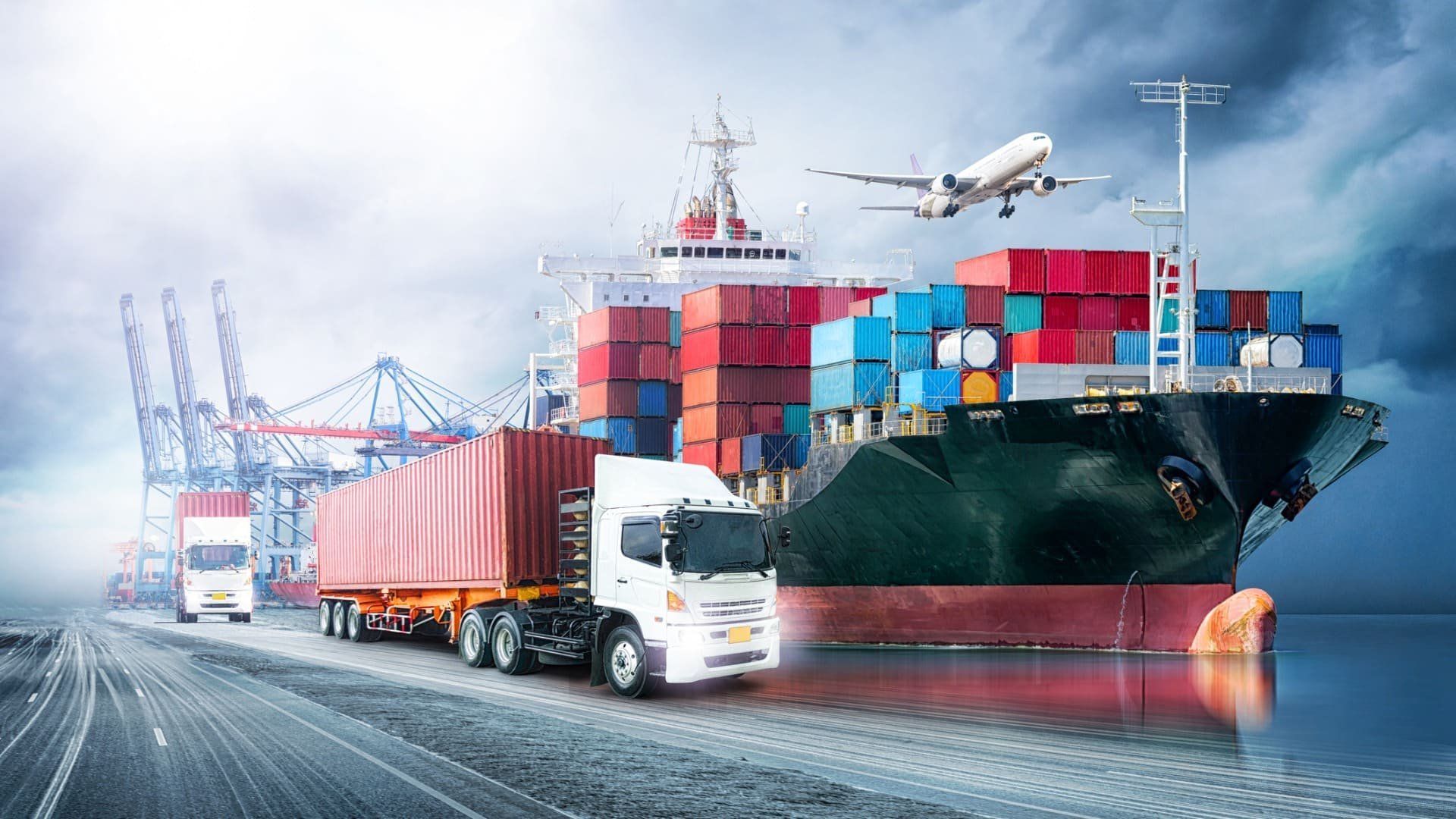
International freight plays a crucial role in global logistics, especially for companies involved in international trade. Knowing how to accurately calculate the cost of freight is essential to remain competitive and avoid losses.
In this article, you will learn how to create a more accurate international freight quote by considering all the factors involved.
What is International Freight?
International freight is the service responsible for transporting goods between different countries, following the export and import regulations of each location involved.
Unlike domestic freight, international transport involves factors such as distance, customs regulations, and choice of transportation mode, all of which directly affect costs. Additionally, accurate quoting depends on understanding the different modalities and service options available, as outlined below.
Main Types of International Freight
For a precise quote, it's essential to understand the types of international freight available. They vary depending on the cargo's needs and the type of product being transported:
Modal Freight
This uses only one mode of transport, such as maritime or air. Maritime transport is the most common due to its cost-effectiveness for large volumes of goods. Air transport, while more expensive, is ideal for urgent deliveries or high-value items.
The five main categories are:
- Rail (locomotives and trains);
- Road (trucks and other cargo vehicles);
- Water (ships and boats);
- Air (airplanes);
- Pipeline (pipes and tubing).
Multimodal Freight
This combines different modes of transport, such as air and maritime. This type is recommended when optimizing cost or transit time by leveraging the strengths of each mode is necessary.
How Does International Freight Work?
To clarify how international freight works, consider the following workflow, which outlines the steps involved in transporting goods from one country to another—from the origin point to the final destination.
- Cargo Origin: Typically, this is the factory where the goods are produced.
- Domestic Transport: After a sale, the product is transported internally, usually via road or rail.
- Customs Clearance: Goods are taken to a customs office near the port or airport for inspection to ensure compliance with export regulations.
- International Shipping: After customs clearance, the cargo is sent to the port or airport for shipment to another country.
- Destination Customs: Upon arrival, goods are directed to the buyer's selected customs office for final clearance.
- Final Delivery: Once cleared, the goods are transported to the recipient.
Key Costs in International Maritime Freight
When requesting a quote for international maritime freight, the document typically includes terms like:
- POL: Port of Loading, where the cargo is loaded;
- POD: Port of Discharge, where the goods are unloaded;
- Comm: Commodity, referring to the type of goods;
- TT: Transit Time;
- Rate OFR: Rate of Ocean Freight, based on weight (W) or cubic meter (m³);
- Transshipment Charges: Cost for cargo transfer;
- Docs: Documentation fees;
- Storage at CFS: Cost of storage at the Container Freight Station, based on weight or cubic meter;
- BL Fee: Bill of Lading issuance fee;
- Deconsolidation Fee: Cost for deconsolidating goods;
- CUC: Chassis Usage Charge;
- EMF: Equipment Management Fee;
- ISPS: Security fee for ships and port facilities;
- BAS: Basic freight rate;
- ODF: Origin Documentation Fee;
- OHC: Origin Handling Charge;
- Capatazias: Terminal handling charges;
- ALL IN: Total freight cost, covering all listed fees.
11 Items for an Accurate Freight Quote Checklist
- Exact type of goods;
- Value of goods;
- Incoterms;
- NCM (Harmonized System Code);
- Origin and destination;
- Full address with ZIP code (for pickup/delivery);
- Mode of transport;
- Delivery deadline;
- Cargo dimensions (length, width, and height);
- Gross weight of the cargo;
- Packaging type.
By following this checklist, your quote will be more precise, enabling better cost management for international freight.
How to Calculate International Freight
Accurately calculating international freight involves multiple factors, including weight, volume, route, and transport mode. Below are key considerations:
1. Cargo Weight and Volume
Weight and volume are primary cost determinants. In air transport, weight is often the limiting factor. In maritime LCL (Less-than-Container Load), calculate the cargo's density by multiplying its length, width, and height for total volume. The higher factor (weight or volume) determines the rate. For FCL (Full Container Load), the cost is per container, regardless of usage.
2. Transport Mode
Choose the mode based on cargo characteristics. Bulky shipments often favor maritime transport, while lightweight, high-value goods may require air transport. Consider delivery deadlines, material type, and urgency.
3. Additional Costs and Fees
Logistics involve various additional charges, including customs fees, depending on origin and destination regulations.
4. Incoterms and Responsibilities
International Commercial Terms define buyer and seller responsibilities, impacting freight costs. There are 11 Incoterms divided into four groups:
- Group C (CPT, CIP, CFR, CIF);
- Group D (DAP, DPU, DDP);
- Group E (EXW);
- Group F (FCA, FAS, FOB).
How to Request an International Freight Quote
- Look for a reliable freight forwarder, customs broker, or trade consultant. Research their reputation online.
- Request a detailed quote, including transit time, service frequency, and next departures.
- Avoid falling for the lowest price without checking service reliability.
- When comparing quotes, ensure you compare equivalent terms and services.
Continue a navegar no blog da Allink

Mantenha-se informado sobre o comércio exterior
Assine nossa newsletter e receba atualizações semanais de forma gratuita sobre o mundo da logística.




